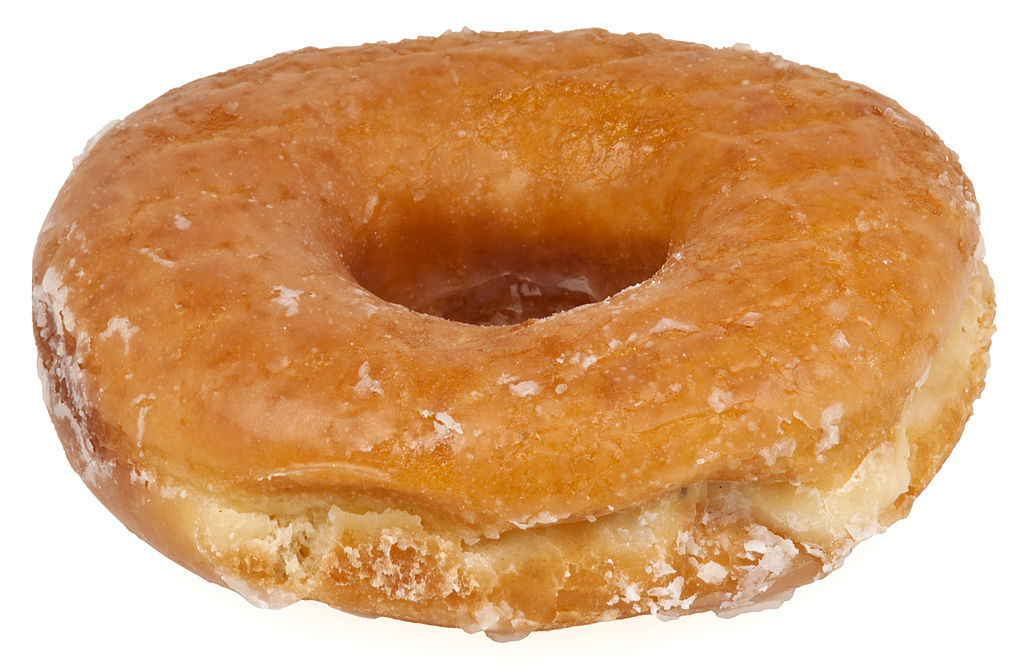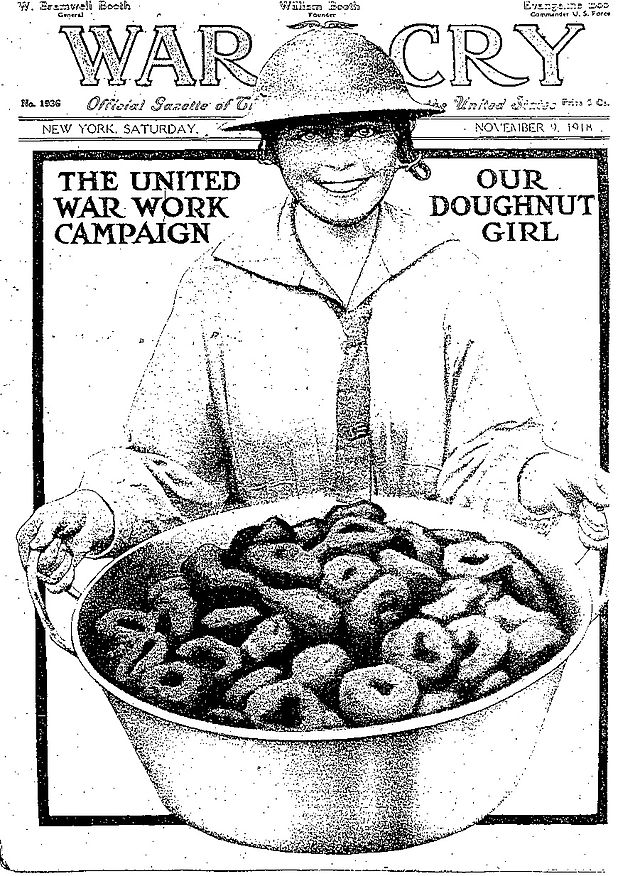“National Doughnut Day is on the first Friday of June each year, succeeding the Doughnut Day event created by The Salvation Army in 1938 to honor the men and women who served doughnuts to soldiers during World War I … A misapprehension has taken hold that the provision of doughnuts to US enlisted men in World War I is the origin of the term “doughboy” to describe US infantry. But, the term was in use as early as the Mexican-American War of 1846–47” (source).
Before your eyes glaze over with that “so what?” look, consider the dark side of doughnuts—not only are they fattening, they contribute to deforestation. “Here’s the connection: You know that oily smudge left on your fingers after you polish off a doughnut? That’s not just sugar. It’s also palm oil. The major doughnut retailers — from Dunkin’ Donuts to Tim Hortons and Krispy Kreme — fry their sweet treats in palm oil, or in blends of oil that include palm oil. And a new report, ‘Deforestation Doughnuts,’ by a rain forest protection coalition called Forest Heroes, concludes that leading doughnut companies are sourcing some of their palm oil from suppliers who are clear-cutting rain forests and destroying wildlife habitat and carbon-rich peatlands” (source).
“The United Nations Environment Programme has announced that palm oil plantations are now the leading cause of rainforest destruction in Malaysia and Indonesia. An area of forest equal to 300 soccer fields is being destroyed every hour. The burning of forests to clear land for palm oil plantations is a major cause of air pollution in Southeast Asia. It releases CO2 into the atmosphere which contributes to global warming. Research shows that 20% of all global carbon dioxide emissions from fossil fuels come from rainforest destruction. Deforestation for the establishment of palm oil plantations is responsible for habitat loss for threatened and endangered species. Priority species impacted by forest clearing are the Asian elephant, tiger, Sumatran rhinoceros and the orangutan. The Asian elephant and Bornean orangutan are endangered and the tiger, Sumatran rhinoceros, and Sumatran orangutan are Critically Endangered” (source).
“Sustainable palm oil” is a term used to describe palm oil agricultural ventures that endeaver to produce palm oil without causing deforestation or harming people and are “certified” to do so. However, “Palm oil growers who produce Certified Sustainable Palm Oil have been critical of the [RSPO] organization because, though they have met Roundtable on Sustainable Palm Oil (RSPO) standards and assumed the costs associated with certification, the market demand for sustainable palm oil remains low. Low market demand has been attributed to the higher cost of Certified Sustainable Palm Oil, leading palm oil buyers to purchase cheaper non-certified palm oil. In 2011, 12% of palm oil produced was certified sustainable, though only half of that was purchased under the RSPO label. Even with such a low proportion being certified, Greenpeace has argued that confectioners are avoiding responsibilities on sustainable palm oil by only meeting RSPO standards, which Greenpeace argues fall short of protecting rain forests and reducing greenhouse gases (Wikipedia: Palm oil).
Editor’s note: Many thanks to Linda Norrington for suggesting this material.






